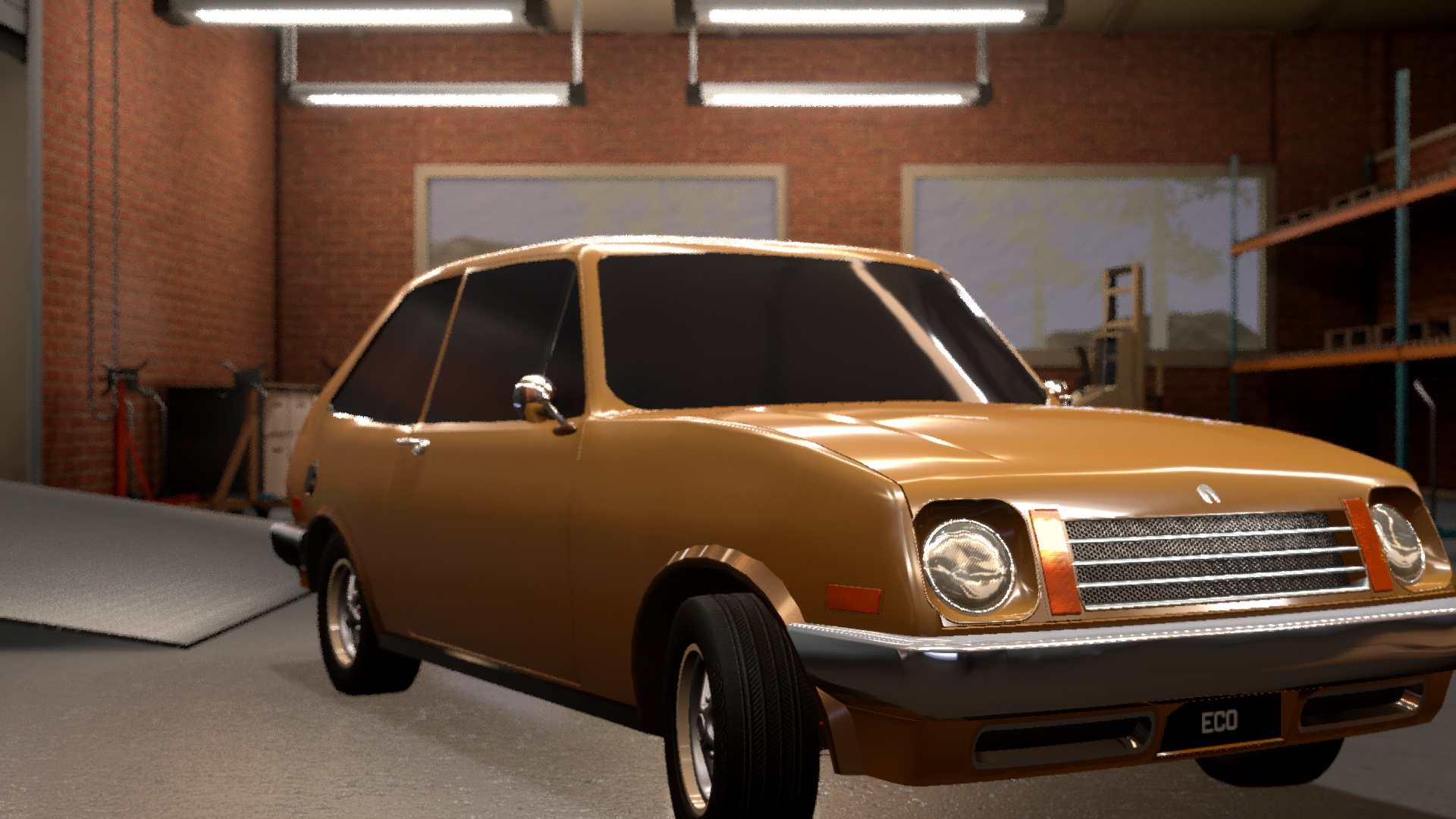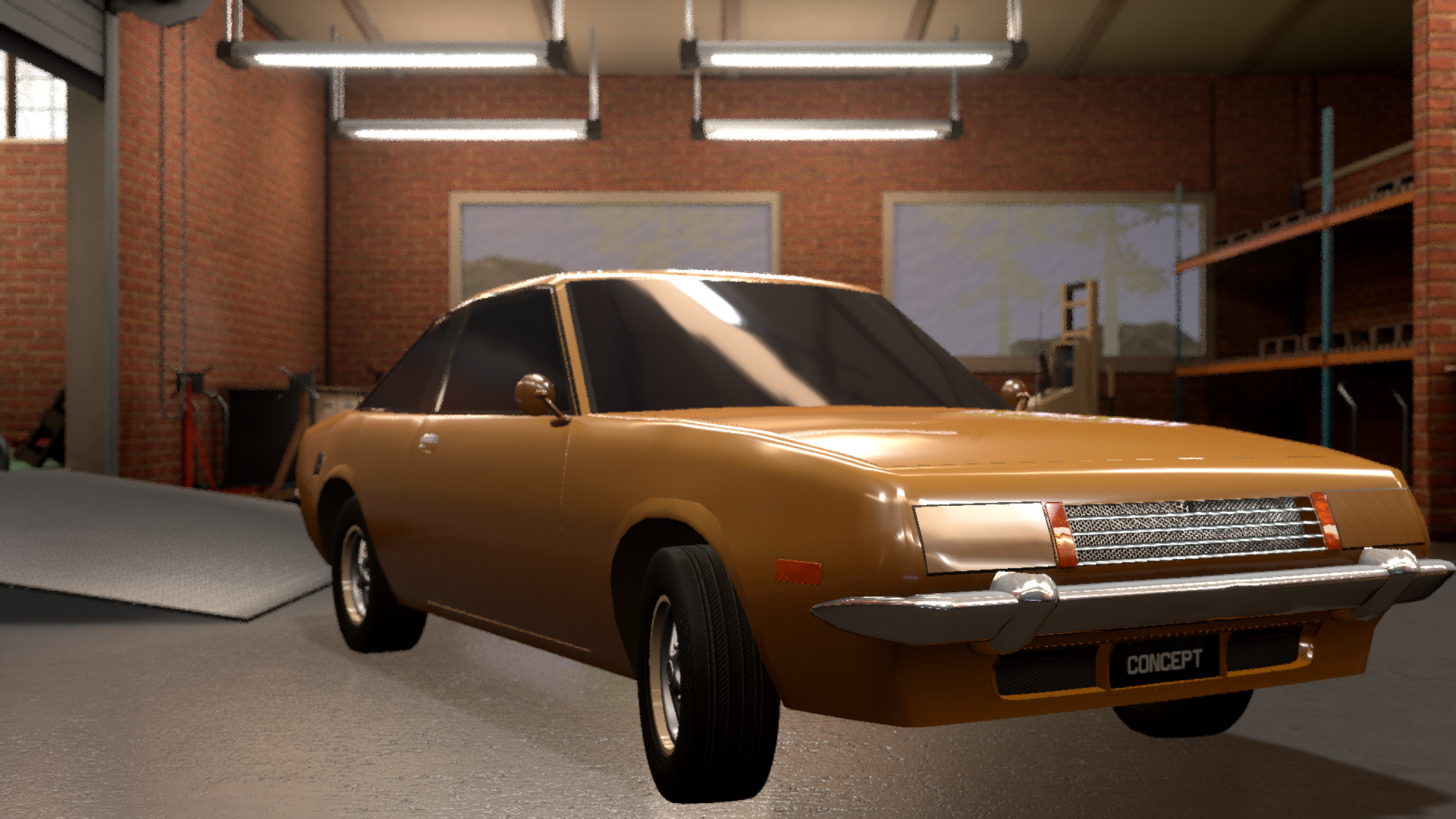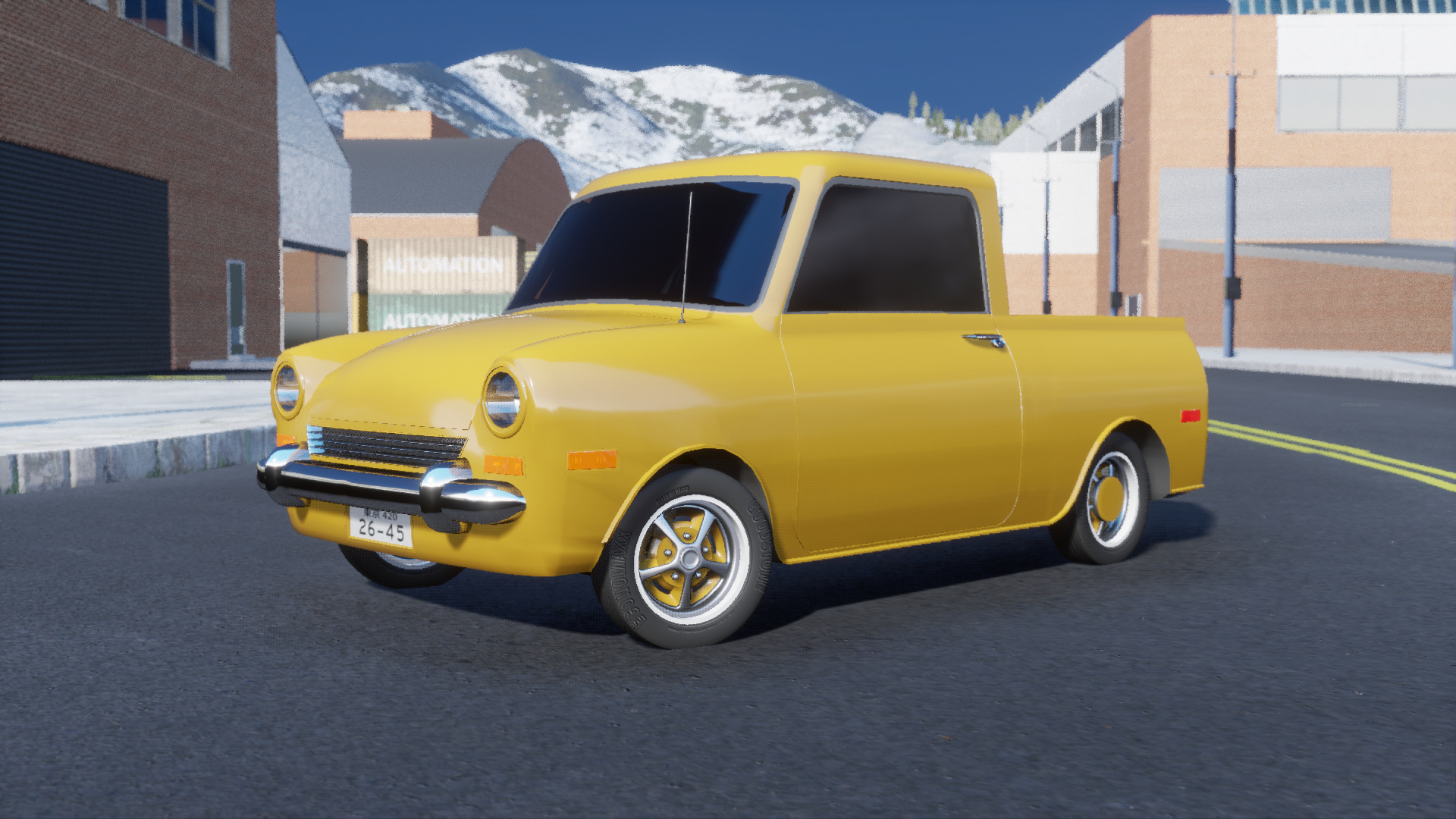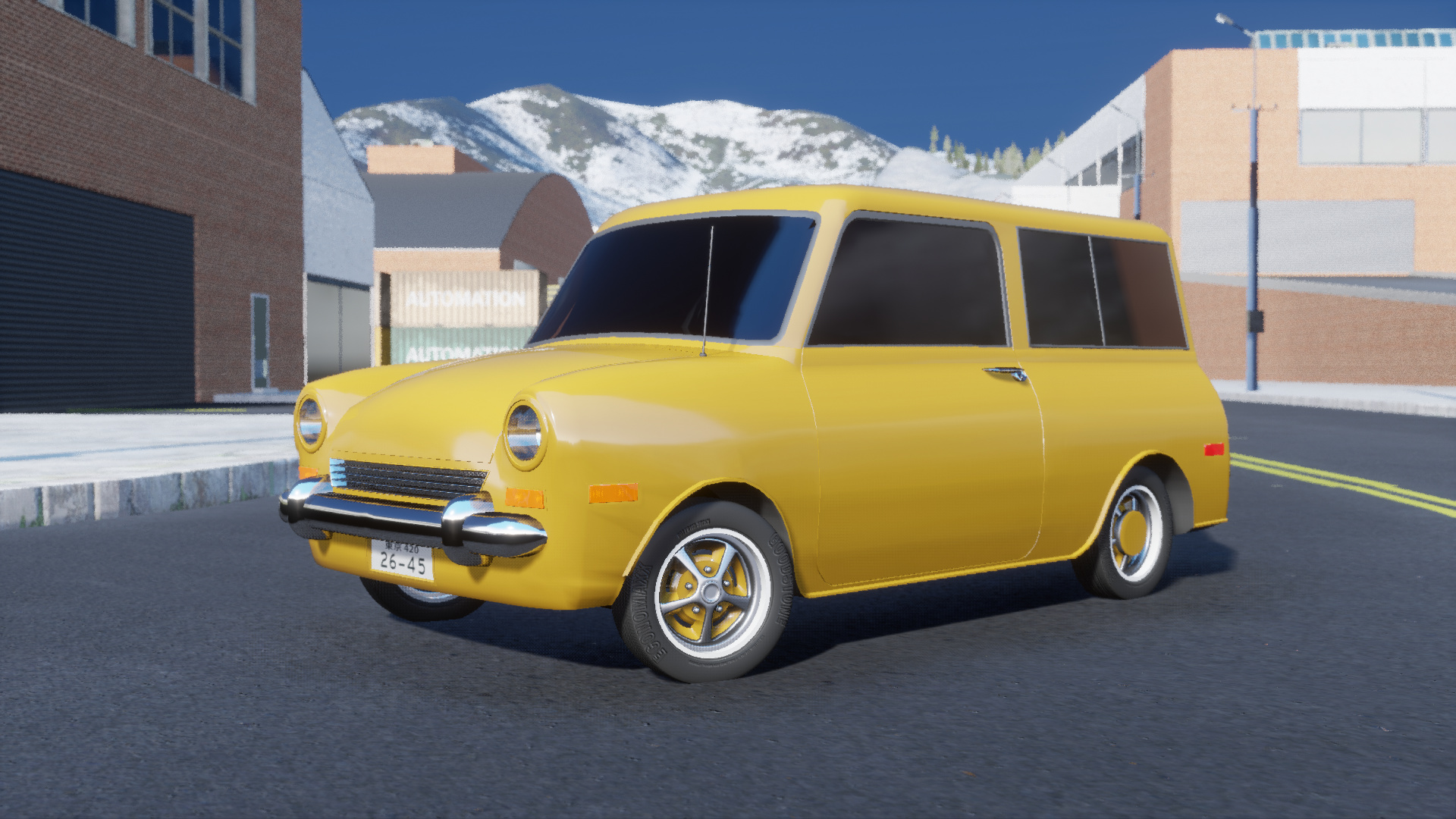Pegasus in the new age
October 1986, the stock market crashed. Car companies start cutting corners, bringing out old outdated boxy designs with under-powered motors. And then come the layoffs, and the off-shoring. Olympus Motor Group prides itself on its close relationship with the local unions, but they may have to resort to drastic measures if they don’t think outside the box.
Recently, the concept of a low priced, fix-it-yourself vehicle has become more of a niche market, and Pegasus started losing some market share; after all, their target market is typically the hardest hit by this economic downturn. Over the last 40 years, Olympus has built new plants for its other brands, and it seems like now would be the time to re-invest in the Pegasus nameplate. Beginning January 1, 1987, the large plant producing the Courrier and Porter models was put into 24/7 production. The crew continued to work their 5- 8 hour days, but not necessarily Monday through Friday. Extra personnel were brought in from other plants, where they would split their week 3 days at their home plant, 2 at the Pegasus plant. Production would continue like this until June 30, 1988, when the Pegasus plant would be shut down and razed to make room for a new, more up to date plant. In these 18 months, workers built enough Courrier and Porter models to last through the end of 1990, when the Courrier would cease to be (until 2008), as would the Porter (with no plans as of yet to bring back that name). At the end of this production run-up, anyone who was within 5 years of retiring was offered a full pension, if they would help to make way. This allowed most of the workforce to be distributed to existing plants, while the remaining would be utilized in the construction of the new plant.
For the 1988 model year, Three new motors were introduced for the Pegasus line, meaning the carbureted Pegasus 1300 would end with the Courrier and Porter. The New Wave Pegasus motors were the New Wave Pegasus Three, the New Wave Pegasus Four, and the New Wave Pegasus Six. All three models were DOHC with 4 valves per cylinder and multi-port fuel injected, co-opted from the parent companies more expensive brands. Their displacements were 1.2 liters, 1.6 liters, and 2.4 liters respectively. The New Wave Pegasus Three, produced 62 hp and 96 lb ft of torque, and the New Wave Pegasus Four, 85 hp and 120 lb ft of torque; both motors had a turbo option which was good for an extra 45% more horsepower and torque, as well as slightly better economy, at the expense of having to pay for premium fuel. The New Wave Pegasus Six did not have a turbo option, but produced a decent 112 hp and 154 lb ft of torque.
The 1988 model year also saw the end of the mid-sized Traveler, in favor of the more compact Fidget; which shared a chassis with the Orion Panther and Star Comet. Also gone, was the Full-size Hauler pickup truck, replaced by the compact P-50; which shared its chassis with the Star Craftsman compact pickup. Black and Primer were no longer a charming way to cut costs in customers’ eyes, so Pegasus expanded its color pallet to include black, white, and six candy colors in between, with primer being reserved for large fleet orders (for which these cars were still designed). The trim packages now included the Standard (absolutely basic package), the Plus One (which would feature a 4 speed automatic transmission for the first time under this brand), the Plus Two (Air conditioning and AM/FM Cassette stereo), Plus Three (on the Fidget and other future models would feature the Turbo variant of their respective motor with the 5 speed manual), and Plus Four (on the P-50 would feature 4 wheel drive with a 5 speed manual, and off road suspension)
The Fidget shown here in coupe variant for 1988, featured the New Wave Pegasus Four. The Plus Three Trim package would feature the turbo variant. Also available in Sedan, and Estate Wagon.
The P-50 shown here as standard package for 2003 (those lights I think are a result of the update, they weren’t red before) came equipped with the New Wave Pegasus Six
A model that would be resurrected was the Wanderer. The Wanderer would feature the New Wave Pegasus Four and was produced on the same assembly line as the light trucks, but on its very own chassis. This Wanderer would be a bit smaller than older generations, but just as adept at off-roading.
Even though this is a picture of the 2010 Wanderer, it was reprised in 1988 and continues to this day, trust me.
Construction on the New Pegasus plant was completed in July of 1989, a bit later than expected; the 1990 models would be delayed, quite possibly until the 1991 model year. As the economy started to recover a bit, and word got out that there would be no more Courriers or Porters, Pegasus supply of entry level cars began to dwindle. In fact, the last Courrier would be sold on 29 September 1989, and the last Porter on February 12, 1990. This meant there would be a gap of six months before the Courrier’s replacement could reach showroom floors. Finally on July 1, 1990, the world would see the model that replaced the beloved, and famed Courrier (as well as the Porter, but people really weren’t clamoring too much over that); the 1991 Pegasus Getaway. Featuring the New Wave Pegasus Three, the Getaway was an economical and quite affordable entry level car. Many people however, were demanding the Plus Three trim; there was a run on showroom floors. Pegasus could not meet demand, even with their new high tech facility. By 1995, supply and demand began to equalize, and people were happy with Pegasus once again.
Olympus Motor Group Executives wanted to have the Getaway ready for the 1990 model year, but conservative estimates had it projected as a 1990.5. In the end, it arrived just barely in time for the 1991 model year. High demand, especially for the Plus Three variant, caused rushed work, and very frequently reliability problems. By 1995, most of the problems had been ironed out. Unlike the Courrier and Porter, executives decided to keep the Getaway fresh, by performing cosmetic changes every 5 years.
In the 2000s, engineers wanted to design something fun for Pegasus owners. They designed a 21st century variant of the New Wave Four Turbo, that would feature direct injection. This would give the engine 13 extra horsepower, making it more efficient, and allow it to run on regular unleaded fuel. This engine would be put in a small two seat coupe, with an expected release for the 2008 model year. Unfortunately, the economy started heading south once again. Marketers launched a last minute campaign to badge the new coupe with a familiar name. The car whose project name was Zoom, would be branded the New Courrier.
The new Courrier got a class leading 47 miles per gallon, and could accelerate to 60 MPH in under 6 seconds. This model was so successful that Olympus Motor Group decided to make an Orion based on it, rather than the other way around; that model would not see showrooms until 2011 however, and would feature a much more aggressive powertrain. The New Courrier would only come in 1 trim, being that it was already turbo-charged and had the necessary accoutrment, but because of the Courrier’s do-it-yourself legacy, aftermarket turbo modification kits were often sold.
This is the lineup of Pegasus until this very day, although many models have been refreshed and updated.
New Courrier
Getaway
Wanderer
Fidget
P-50
Pegasus Motors. An entry level, economy brand, import fighter. Part of the Olympus Motor Group family.














































































